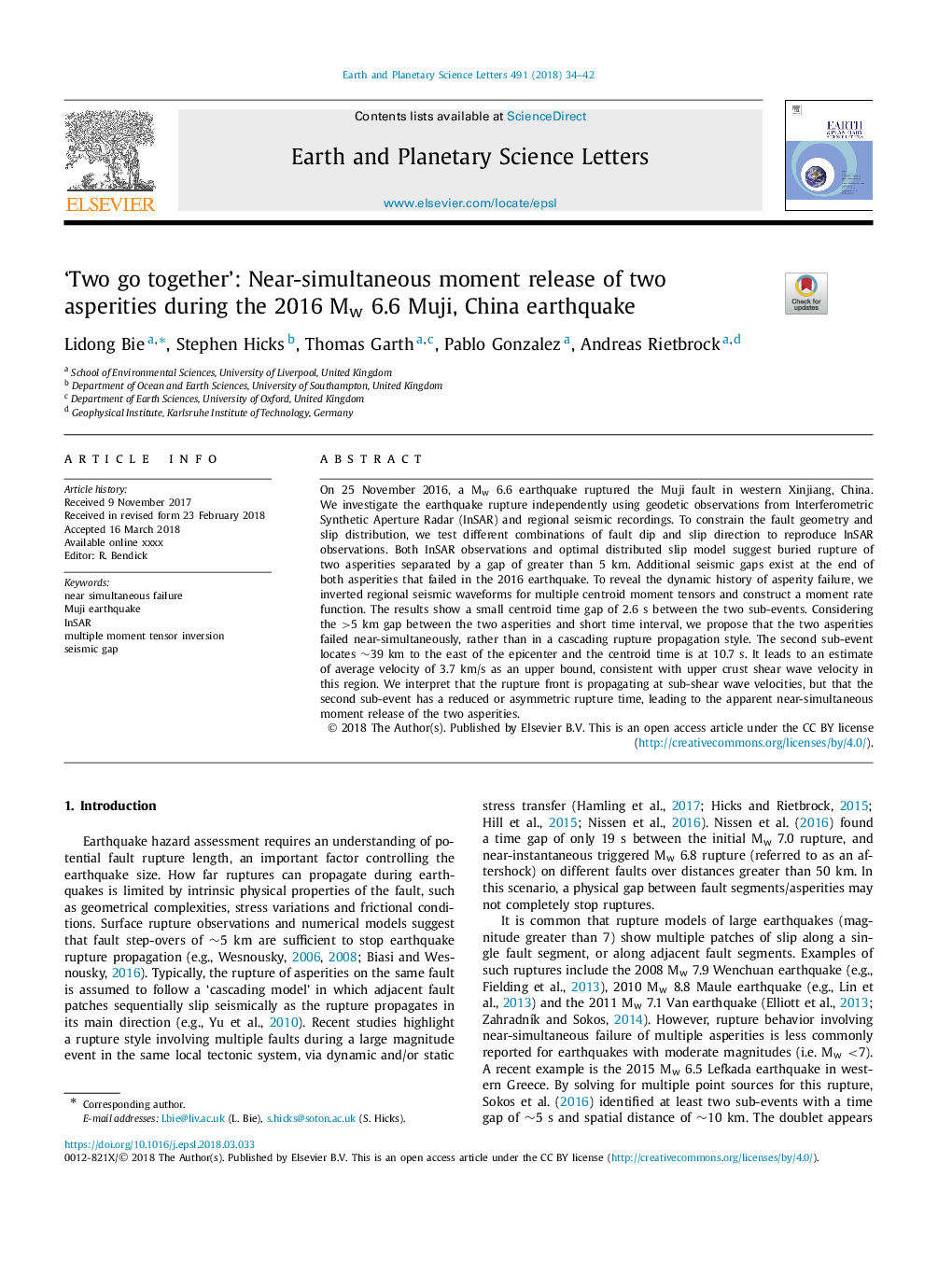| Article ID | Journal | Published Year | Pages | File Type |
|---|---|---|---|---|
| 8906929 | Earth and Planetary Science Letters | 2018 | 9 Pages |
Abstract
On 25 November 2016, a Mw 6.6 earthquake ruptured the Muji fault in western Xinjiang, China. We investigate the earthquake rupture independently using geodetic observations from Interferometric Synthetic Aperture Radar (InSAR) and regional seismic recordings. To constrain the fault geometry and slip distribution, we test different combinations of fault dip and slip direction to reproduce InSAR observations. Both InSAR observations and optimal distributed slip model suggest buried rupture of two asperities separated by a gap of greater than 5 km. Additional seismic gaps exist at the end of both asperities that failed in the 2016 earthquake. To reveal the dynamic history of asperity failure, we inverted regional seismic waveforms for multiple centroid moment tensors and construct a moment rate function. The results show a small centroid time gap of 2.6 s between the two sub-events. Considering the >5 km gap between the two asperities and short time interval, we propose that the two asperities failed near-simultaneously, rather than in a cascading rupture propagation style. The second sub-event locates â¼39 km to the east of the epicenter and the centroid time is at 10.7 s. It leads to an estimate of average velocity of 3.7 km/s as an upper bound, consistent with upper crust shear wave velocity in this region. We interpret that the rupture front is propagating at sub-shear wave velocities, but that the second sub-event has a reduced or asymmetric rupture time, leading to the apparent near-simultaneous moment release of the two asperities.
Keywords
Related Topics
Physical Sciences and Engineering
Earth and Planetary Sciences
Earth and Planetary Sciences (General)
Authors
Lidong Bie, Stephen Hicks, Thomas Garth, Pablo Gonzalez, Andreas Rietbrock,
